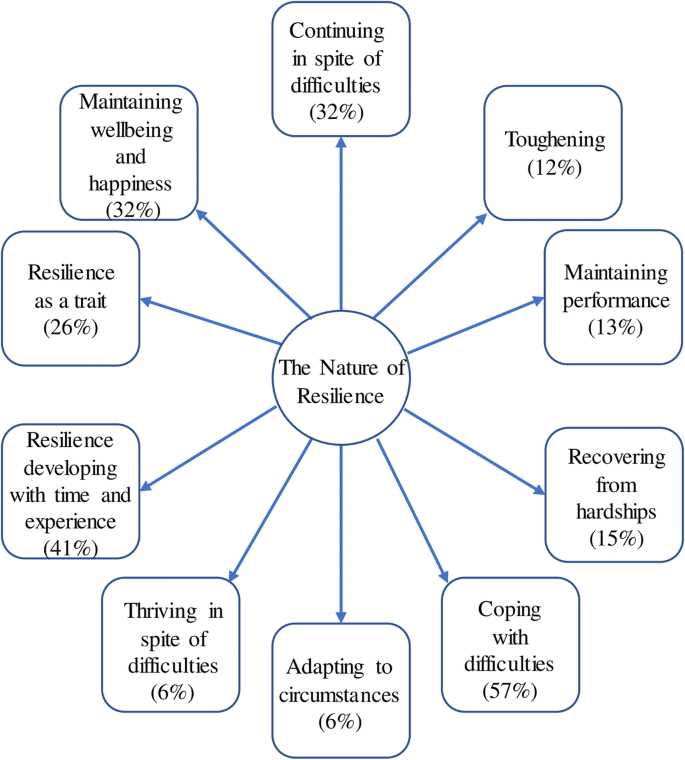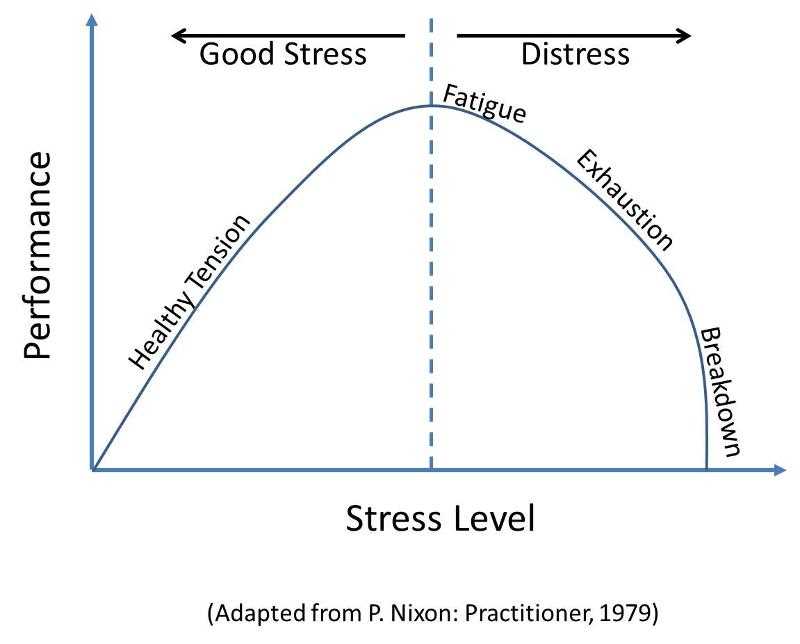
Stress is an inevitable part of life, and trees are no exception. Just like humans, trees face a variety of stressors in their environment, including extreme temperatures, drought, pests, and diseases. However, trees have developed remarkable resilience and coping mechanisms to survive and thrive in the face of adversity.
One of the key ways trees cope with stress is through their ability to adapt and adjust to changing conditions. Trees have the remarkable ability to sense changes in their environment and respond accordingly. For example, during periods of drought, trees can close their stomata, the tiny openings on their leaves, to reduce water loss through transpiration. This adaptive response helps trees conserve water and survive in arid conditions.
Another coping mechanism that trees employ is the production of stress hormones. Just like humans produce cortisol in response to stress, trees produce hormones such as abscisic acid and ethylene. These hormones help regulate various physiological processes in trees, such as growth, development, and defense against pathogens. By producing these stress hormones, trees are able to activate their defense mechanisms and protect themselves from further damage.
Furthermore, trees have a remarkable ability to compartmentalize and isolate damaged areas. When a tree is injured or infected, it can isolate the affected area by forming barriers around it. This process, known as compartmentalization, helps prevent the spread of pathogens or decay throughout the entire tree. By isolating the damaged area, trees are able to continue growing and thriving, despite the presence of stressors.
In conclusion, trees are resilient organisms that have developed various coping mechanisms to deal with stress. Through their ability to adapt, produce stress hormones, and compartmentalize damaged areas, trees are able to withstand and overcome the challenges they face in their environment. Understanding these mechanisms can provide valuable insights for managing and preserving tree populations in the face of increasing environmental stressors.
Understanding Tree Stress

Stress is a common experience for trees, just as it is for humans. Trees are constantly exposed to a variety of stressors, including extreme temperatures, drought, pests, diseases, and pollution. These stressors can negatively impact a tree’s health and vitality, making it more susceptible to further damage.
Coping with stress is essential for trees to survive and thrive in their environment. Trees have developed various coping mechanisms to deal with stress, allowing them to adapt and continue to grow. One such mechanism is the ability to adjust their growth patterns in response to stress. For example, during periods of drought, trees may reduce their leaf production or shed leaves to conserve water.
Trees also have the ability to produce chemicals and compounds that help protect them from stress. These compounds can act as antioxidants, helping to neutralize harmful free radicals that are produced during stressful conditions. Additionally, trees can produce chemicals that deter pests and diseases, further enhancing their resilience.
Another coping mechanism that trees utilize is the formation of callus tissue. When a tree is injured or damaged, it will form callus tissue around the wound to protect itself from further harm. This callus tissue acts as a barrier, preventing pathogens from entering the tree and causing infection.
Understanding tree stress and how trees cope with it is crucial for arborists and tree care professionals. By recognizing the signs of stress and implementing appropriate measures, such as providing proper irrigation or pest management, trees can be better equipped to withstand and recover from stressful conditions.
Causes of Tree Stress

Resilience is the ability of a tree to withstand and recover from stress. However, there are various factors that can cause stress in trees, affecting their overall health and vitality.
One of the main causes of tree stress is environmental factors. Trees can be exposed to extreme temperatures, drought, flooding, or strong winds, which can all lead to stress. These factors can disrupt the tree’s ability to absorb water and nutrients, leading to dehydration and nutrient deficiencies.
Another common cause of tree stress is poor soil conditions. Trees require a well-drained soil with appropriate pH levels to thrive. If the soil is compacted, contaminated, or lacking in essential nutrients, it can impede the tree’s root development and nutrient uptake, causing stress.
Furthermore, pests and diseases can also cause stress in trees. Insect infestations, such as bark beetles or aphids, can weaken a tree’s defenses and leave it vulnerable to further damage. Fungal infections, like root rot or canker, can also impact a tree’s health and resilience.
Human activities can also contribute to tree stress. Construction, pollution, and improper tree care practices, such as over-pruning or improper watering, can all negatively impact a tree’s health and increase its susceptibility to stress.
It is important to identify and address the causes of tree stress to promote their resilience and overall well-being. By providing proper care, including regular watering, mulching, and monitoring for pests and diseases, trees can better cope with stress and maintain their vitality.
Signs and Symptoms of Stressed Trees

Trees, like humans, have coping mechanisms and resilience to deal with various stressors. However, when trees are under significant stress, they may exhibit signs and symptoms that indicate their struggle to cope.
- Wilting leaves: One of the most common signs of a stressed tree is wilting leaves. When a tree is unable to get enough water or nutrients, its leaves may start to droop or wilt.
- Yellowing or browning leaves: Another sign of tree stress is the yellowing or browning of leaves. This can be caused by a lack of water, nutrient deficiencies, or disease.
- Leaf drop: When a tree is under stress, it may shed its leaves prematurely. This is a survival mechanism that allows the tree to conserve energy and resources.
- Stunted growth: Stress can also affect a tree’s growth. If a tree is not getting enough water or nutrients, it may have stunted or slow growth compared to healthy trees.
- Dieback: Dieback refers to the death of branches or sections of a tree. This can be caused by stressors such as drought, disease, or insect infestations.
- Cracks or splits in the bark: When a tree is stressed, its bark may crack or split. This can be a sign of underlying issues such as drought, extreme temperatures, or physical damage.
- Increased susceptibility to pests and diseases: Stressed trees are more vulnerable to attacks from pests and diseases. A weakened tree may not have the resources to defend itself effectively.
- Root problems: Stressed trees may also exhibit root problems, such as root rot or root girdling. These issues can further impact the tree’s ability to absorb water and nutrients.
Recognizing these signs and symptoms of stress in trees is crucial for their proper care and management. By identifying and addressing the underlying causes of stress, tree owners and arborists can help promote the resilience and recovery of these valuable natural resources.
Resilience in Trees

Resilience is a crucial characteristic that allows trees to cope with stress and adversity. Trees have developed various coping mechanisms to withstand the challenges they face in their environment.
One of the ways trees exhibit resilience is through their ability to adapt to changing conditions. Trees can adjust their growth patterns and physiological processes in response to stressors such as drought, extreme temperatures, or nutrient deficiencies. This adaptability allows them to survive and thrive in diverse habitats.
Another mechanism that contributes to the resilience of trees is their ability to store and allocate resources efficiently. Trees have complex root systems that can access water and nutrients from deep within the soil, ensuring their survival during periods of limited resources. Additionally, trees can allocate resources to different parts of their structure, prioritizing essential functions and minimizing damage caused by stress.
Furthermore, trees have developed defense mechanisms to protect themselves from biotic stressors such as pests and diseases. They can produce chemical compounds that deter herbivores and pathogens, and some trees even have symbiotic relationships with beneficial organisms that help enhance their resilience.
Overall, resilience in trees is a multifaceted trait that combines adaptability, resource allocation, and defense mechanisms. These characteristics enable trees to withstand stress and continue to thrive in their environments, making them essential components of healthy ecosystems.
Natural Resilience Mechanisms

Trees, like all living organisms, experience stress in various forms. Whether it’s extreme weather conditions, insect infestations, or disease outbreaks, trees must cope with these stressors to survive. Fortunately, trees have developed natural resilience mechanisms that help them adapt and recover from stressful situations.
One of the key resilience mechanisms in trees is their ability to adjust their growth patterns in response to stress. When faced with unfavorable conditions, trees can slow down their growth rate or allocate resources differently to prioritize survival. This adaptive strategy allows trees to conserve energy and focus on essential functions, such as repairing damaged tissues or developing stronger root systems.
Another important mechanism is the production of stress hormones. Trees can release hormones, such as abscisic acid, in response to stress. These hormones help regulate various physiological processes, such as stomatal closure to reduce water loss or the activation of defense mechanisms against pathogens. By producing stress hormones, trees can actively cope with stress and enhance their resilience.
In addition, trees have developed physical defenses to protect themselves against stressors. For example, some tree species produce thick bark or resin to shield themselves from insect attacks or fungal infections. Others have developed structural adaptations, such as flexible branches or deep root systems, to withstand strong winds or drought conditions. These physical defenses not only provide immediate protection but also contribute to the long-term resilience of trees.
Furthermore, trees have a remarkable ability to form symbiotic relationships with other organisms, such as mycorrhizal fungi. These fungi form mutualistic associations with tree roots, providing them with nutrients and enhancing their ability to absorb water. In return, trees supply the fungi with sugars produced through photosynthesis. This symbiotic relationship helps trees cope with nutrient deficiencies or drought stress, improving their overall resilience.
In conclusion, trees possess a range of natural resilience mechanisms that enable them to cope with stress. These mechanisms include adaptive growth patterns, the production of stress hormones, physical defenses, and symbiotic relationships. By understanding and harnessing these mechanisms, we can better support the resilience of trees and ensure their long-term survival in the face of changing environmental conditions.
Enhancing Tree Resilience

Coping with stress is an essential aspect of tree resilience. Trees have developed various mechanisms to enhance their ability to withstand and recover from stressful conditions. These coping mechanisms allow trees to adapt to changes in their environment and maintain their overall health and vitality.
One way trees enhance their resilience is through the development of a strong root system. A healthy root system provides stability and allows trees to efficiently absorb water and nutrients from the soil. This helps trees withstand drought conditions and nutrient deficiencies, which are common sources of stress.
Another mechanism trees use to enhance their resilience is the production of protective compounds. When trees are exposed to stressors such as pests, diseases, or extreme temperatures, they can produce chemicals that help defend against these threats. These compounds can inhibit the growth of pests or pathogens, and they can also help trees tolerate extreme temperatures.
Furthermore, trees can enhance their resilience by adjusting their growth patterns in response to stress. For example, during periods of drought, trees may reduce their leaf size or shed leaves altogether to conserve water. This allows trees to allocate resources more efficiently and survive in challenging conditions.
In addition to these coping mechanisms, trees can also benefit from human interventions to enhance their resilience. Practices such as proper pruning, mulching, and irrigation can help support tree health and improve their ability to cope with stress. Providing trees with adequate care and maintenance can go a long way in enhancing their overall resilience.
In conclusion, enhancing tree resilience involves a combination of natural coping mechanisms and human interventions. By understanding and implementing these strategies, we can help trees thrive even in the face of stressful conditions. This is crucial for maintaining healthy and vibrant tree populations, which provide numerous environmental, economic, and social benefits.
Coping Mechanisms in Trees
Trees have evolved a variety of coping mechanisms to deal with stress and maintain their resilience in challenging environments. These mechanisms allow trees to adapt to changing conditions and continue to thrive.
One coping mechanism that trees employ is the ability to adjust their growth patterns in response to stress. When faced with limited resources or unfavorable conditions, trees can slow down their growth rate or redirect their energy towards essential functions such as root development or defense against pests and diseases.
Another coping mechanism is the production of stress hormones. Trees can release hormones such as abscisic acid and ethylene in response to stress, which help regulate their physiological processes and promote survival. These hormones can trigger changes in leaf structure, stomatal closure, and the shedding of leaves to conserve water during drought conditions.
Trees also have the ability to form symbiotic relationships with fungi, known as mycorrhizae, which can enhance their resilience to stress. Mycorrhizae help trees absorb nutrients from the soil and improve their resistance to pathogens. In exchange, the fungi receive sugars and other organic compounds from the tree.
In addition, trees can cope with stress by developing thicker bark or producing resins and other chemical compounds that act as a defense mechanism against pests and diseases. These compounds can repel or inhibit the growth of harmful organisms, helping the tree to maintain its health and vitality.
Furthermore, trees have the ability to shed damaged or diseased branches, a process known as pruning. Pruning helps trees remove parts that are no longer functional or pose a risk to the overall health of the tree. This allows the tree to allocate its resources more efficiently and focus on growth and recovery.
Overall, trees possess a range of coping mechanisms that enable them to withstand stress and maintain their resilience. These mechanisms not only help individual trees survive in challenging environments but also contribute to the overall health and stability of forest ecosystems.
Adaptive Growth Strategies

Trees have developed a variety of adaptive growth strategies to cope with stress, enhance resilience, and ensure their survival in challenging environments. These strategies allow trees to respond to and overcome various forms of stress, such as drought, extreme temperatures, nutrient deficiencies, and pests.
One adaptive growth strategy is the development of deep root systems. Deep roots allow trees to access water and nutrients from lower soil layers, even during periods of drought. This enables them to maintain their physiological functions and continue to grow, despite water scarcity.
Another strategy is the production of stress hormones, such as abscisic acid (ABA). ABA helps trees regulate their water usage by closing stomata, the tiny pores on their leaves, to reduce water loss through transpiration. This conserves water and allows trees to survive in arid conditions.
Trees also exhibit resilience through the process of compartmentalization. When a tree is damaged or infected by pests or diseases, it can compartmentalize the affected area by forming barriers to prevent the spread of the stressor. This limits the damage and allows the tree to continue growing and thriving.
In addition, some trees have the ability to adjust their growth patterns in response to stress. They can allocate more resources to root growth to enhance water and nutrient uptake, or redirect resources to produce more leaves for increased photosynthesis. This flexibility in growth patterns allows trees to adapt to changing environmental conditions and optimize their chances of survival.
Overall, the adaptive growth strategies employed by trees demonstrate their remarkable ability to cope with stress, enhance resilience, and ensure their long-term survival. By understanding these strategies, we can better appreciate the resilience of trees and the importance of preserving and protecting their habitats.
Defense Mechanisms

Trees have developed a variety of defense mechanisms to cope with stress and protect themselves from harm. These mechanisms allow trees to adapt and survive in challenging environments.
One of the primary defense mechanisms trees employ is the production of chemical compounds. When a tree is under stress, it can release chemicals that repel or deter potential threats, such as insects or pathogens. These chemicals can also signal to other trees in the area to activate their own defense mechanisms.
Another defense mechanism trees use is physical adaptations. Some trees have thick bark that can protect them from fire or extreme temperatures. Others have thorns or spines that deter animals from feeding on their leaves or branches. Some trees even have the ability to shed their leaves or branches when under stress, allowing them to conserve energy and resources.
Trees also have the ability to adjust their growth patterns in response to stress. When faced with limited water or nutrients, trees can slow down their growth or allocate resources to areas that need them the most. This flexibility allows trees to prioritize their survival and adapt to changing conditions.
In addition to these defense mechanisms, trees can also rely on symbiotic relationships with other organisms to cope with stress. For example, some trees form mutualistic relationships with fungi, where the fungi provide the tree with nutrients in exchange for sugars produced through photosynthesis. These relationships can enhance the tree’s ability to withstand stress and improve its overall resilience.
In conclusion, trees have evolved a range of defense mechanisms to cope with stress and protect themselves from harm. These mechanisms include the production of chemical compounds, physical adaptations, growth pattern adjustments, and symbiotic relationships. By employing these defense mechanisms, trees are able to thrive and survive in even the most challenging environments.

I am Patrina de Silva, a psychologist and mental health blogger in Sri Lanka. After obtaining psychology degrees from the University of Colombo and Monash University, I returned home to work as a counselor while also starting the popular blog “Pressy but Happy” to provide advice on psychological issues. Over the past decade, my empathetic articles have made my blog a leading mental health resource in the country. In addition to writing, I maintain a private therapy practice, frequently volunteer counseling time, and conduct seminars, driven by my passion for destigmatizing mental illness and educating the public on the mind-body connection. I strive to be an influential voice in my field through my compassionate approach.
